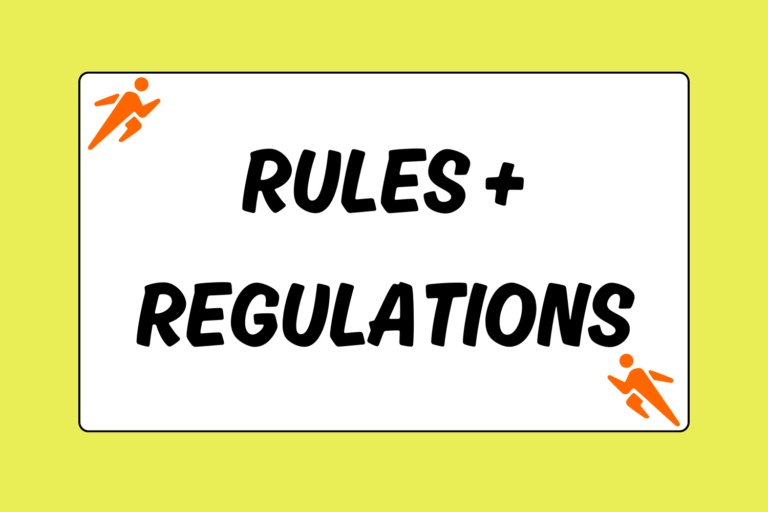Whatever the race, you will have a multitude of thoughts running through your mind once you get on the starting line. Chances are you will wonder how you got yourself into this situation, what you should wear, and everything in between. Things that become routine for more experienced racers can seem overwhelming when the sport is still new. If you’re new to distance racing, check out this guide to learn what’s really important for your first race.
Ignore Doubts
On some level, you will likely be asking yourself why you’re even putting your body through the difficulty of running a race. After all, pushing your body in a race is painful. For some, this thought is very prominent, while for others, it isn’t.
Do your best to ignore feelings of pain. Reassure yourself that you will go through with the race. Part of the experience is figuring out how you react to the discomfort of racing.
Similarly, you are not going to do everything perfectly in your first race. Don’t worry about every little thing that might go wrong. Sticking to the basics is doable, and will preclude total disaster. Beyond that, learning from your inevitable mistakes is how you will get better.
Understand Your Goals
You will likely have a goal in mind for every race. Maybe the goal for your first race is just to finish? Perhaps to see how fast you can run? Or maybe just to hang with a training partner. Whatever it is, the goal for your first race should be simple. Like everything, though, your ability to set goals will be refined with your experience racing.
Don’t Sweat the Small Stuff
Subtle differences in racing shoes, clothing, starting position, and tactics really do matter in distance racing. Starting out, however, these things should not be your main focus.
No matter what your first race is or how it goes, you will have lots of room to improve. A few ounces of rubber is not going to make the difference, but worrying about too many minor details on race day might really harm your experience and thus your result.
Familiarize Yourself
Racing might seem like it is incredibly different from your training. In reality, it isn’t. It is really just an extension of your training. Still, many runners have a tendency to do things differently when they race. Whether it’s performing a different warm-up, wearing different shoes, or employing a different running stride: Making changes forces you to do something you haven’t prepared for.
While you wouldn’t, for instance, want to train in your racing shoes every day, preparation simply means doing so enough to be familiar with the experience on race day. The fewer things you’re doing for the first time, the better. In practice you can try just one new thing at a time. If you wait until the race, you’ll be in over your head.
Here’s a checklist of some things to consider practicing before race day:
- Running in your race shoes
- The warm-up you will perform on race day
- Running at race pace
- Drinking water while you run
- Any tactics you wish to try (surging, for instance)
- Running on terrain that matches your race course
Sure, there might be certain things you don’t have the resources to practice. But the more you can familiarize yourself with, the more successful you’ll be on race day.
Warm up Appropriately
Warming up might be a strange or unfamiliar concept if you’re new to racing. But it is an important one.
There is no one perfect warm-up! You will likely refine what you like to do as you race as you gain experience. Still, a good warm up should include the following elements:
- It should get you sweating, but not tire you out. If completing the distance of the race itself is going to pose a struggle, you will likely want to warm up only minimally.
- It should be race-specific. This means it should work the running muscles and include some running. It can also include drills and stretching.
- It should be familiar. Don’t try some drill you’ve never done in your warm-up. Ideally, you will refine your warm-up to be the same (or similar) to what you do in practice.
- It should begin 20 to 60 minutes before the start of your race.
- It should last longer in cold weather. Similarly, it can be shortened when it’s hot out.
After the race, reflect on whether you think your warm-up prepared you for the race. Did you feel better as you got further into the race? Or did you feel that it was too much and possibly tired you out? Being critical and willing to make changes will let you perfect your own warm-up routine.
Pace, Pace, Pace
While much of what will help you in your first race is simply not worrying about the little details, pacing is not one of those details! You will save yourself lots of pain by starting your race very close to the pace you want to average for the full distance.
If you aren’t sure what to expect of yourself, try to guess using a very conservative estimate based on what you have done in practice. Starting out just a bit faster (less than one minute per mile faster) than you are used to on typical training runs will serve as a good guideline. If you get halfway through the race and it feels much too easy, you can pick up the pace.
You might not reach your potential in the first race, but you will learn what to do next time. However, if you go out too quickly and die, you will learn a lesson you aren’t likely to forget anytime soon. You can’t expect to pace yourself perfectly in your first race, but making it one of your goals will serve you well.
Learn Something from the Race
The only way to learn how to race is to go out and do it. There are innumerable skills to be learned, and you will have to learn them one at a time. Pay attention to differences of race length, competition level, or course type and how your body responds to each.
If you feel you could have executed a part of your race better, take the opportunity to learn something for use in future races. This also means you shouldn’t fear making mistakes! Sometimes failure breeds expertise. As long as you make a point of learning something from each race, your racing ability will continue to improve.





